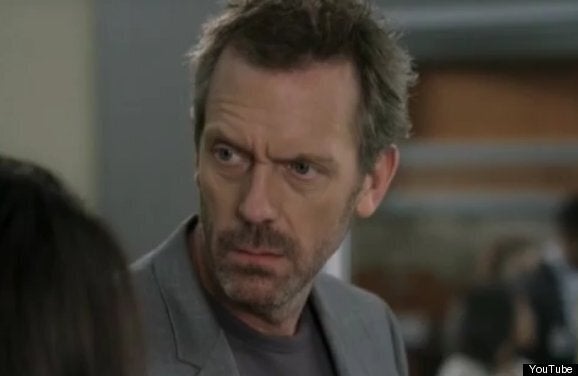
I don't watch much TV, and I have never watched the medical show, "House." But I was a captive audience on a United Airlines flight from Chicago to Hartford yesterday -- one of the first into snowbound Bradley airport as it dug out -- and "House" was the video offering.
I have no idea how representative this episode was of the "House" brand of medicine in general, but I will assume that since Dr. House is an icon, he always does it his way. In which case, my advice is: if you encounter a doctor like House, run for your life!
Jumping to conclusions is almost never a good idea -- I learned that as a kid reading "The Phantom Tollbooth." In medicine, jumping to conclusions takes on particularly ominous implications. In medicine, where there are always many more ways to be wrong than right, and the consequences of being wrong can be deadly, so can this tendency.
Now, back to our regularly scheduled program. In this particular episode of "House," a young female race car driving phenom has some odd combination of seizures and faints. She seems to be the enigma of the week, as House holds court with his minions.
But then, the good doctor is whisked away by a CIA agent to deal with another medical enigma -- a CIA operative that agency doctors believe to be a victim of poisoning, but they don't know what kind. So House takes over the enigma at Langley (or wherever they were), and leaves a subordinate behind to deal with what we now take to be lesser enigma, the race car driver also driving in and out of consciousness for no apparent reason.
More details of the episode we don't really need, and to be honest, though I'm a doctor, I'm not sure I quite know what conclusion was reached in either case. I believe we wind up being told the young woman had heat stroke, and the CIA agent ate too many Brazil nuts. Or vice versa.
But it wasn't the diagnoses that interested and upset me. It was the manner in which care was rendered.
Both House, and his underling, dealing with the two cases in parallel, took whatever few facts they had managed to gather at any given point in the their allotted 47 minutes on air, and jumped to a conclusion about what the diagnosis must be. Both insisted on treating immediately the diagnosis onto which they latched. Then, a few more clues were gathered: they realized the first diagnosis was wrong and they jumped to a second conclusion with equal fervor -- no hint of humility for having been enthusiastically wrong moments before. This happened four or five times, and each time, they immediately treated the diagnosis that ruled their flighty minds for the moment.
Every aspect of this is alarming, and absurd. Clues in medicine are gathered sequentially, often with each one suggesting where and how to look for the next. And among them, one of the most valued is referred to as tincture of time. By this, we mean that how things change and develop over time may be the clearest indication of all of what the underlying condition is.
Belly pain that gets better in two hours was something like indigestion; belly pain that starts causing vomiting in two hours may be pancreatitis, appendicitis or cholecystitis -- to name just a few members of the 'itis' clan. A headache that subsides and is followed by sniffles in two hours is probably a cold; a headache that is much worse and accompanied by fever and a stiff neck in two hours may well be meningitis. But it takes the two hours to tell. Tincture of time takes time, and jumping to conclusions is its nemesis.
But worse than that was the insistence by the TV doctors that each of their sequential conclusions be treated as soon as it occurred to them. Unfortunately, virtually all medical treatments can do harm as well as good, and many -- particularly some of the powerful interventions used to treat life-threatening illness -- can be quite toxic in various ways. Open-heart surgery is one good example. Worth it if coronary disease is about to kill you. But it would be more than a little unfortunate to have a cardiothoracic surgeon open your chest only to learn that in fact your problem was GERD and you needed an antacid. "Oops, my bad!"
There is a certain brand of treatments we routinely use while we remain uncertain about the diagnosis, known broadly as supportive measures. What they support depends on what needs supporting. If blood pressure is low, it needs supporting and gets it from IV fluids, and at times drugs that raise blood pressure, called pressors. If breathing needs support, it may get it from a respirator, or at least an oxygen mask. And if fever and other signs suggest the possibility of severe infection, while waiting for definitive answers about whether there is infection, and if so, broad-spectrum antibiotics may be used.
But all such treatments honor the uncertainty on which they are predicated. They are sensible interim measures, made not because of a definite diagnosis, but in the absence of one. Such measures are provided as the diagnostic effort continues.
I guess it would make for dull TV, but from my perspective the most important statement any doctor needs to be able to make is: I don't know. Better, still, if that is followed by: but I won't stop working until I do!
House, and his subordinate, were heroes in TV land; for never having to say "I don't know." They knew every step of the way. Of course, they were wrong most steps of the way, but at the end of the hour, they had the right diagnoses. That they were just as convinced about the wrong ones along the way was, apparently, forgotten and/or forgiven.
In the real world, almost anyone with a ring side seat to this debacle would have reported both doctors to relevant authorities for criminal recklessness and flagrant malpractice. In the real world, these guys would stand a good chance of jail time. And in the real world, there's a very good chance one or both of them would have killed their patient.
But in TV land, the patients were, of course, saved. And so at 46 minutes into their allotted 47 (or thereabouts, once commercial time is carved out), our heroes were heroes.
And draped out as such on national television. Which leads to my big worry: they might suggest to viewers that this is what good medicine looks like. I have a different suggestion.
Do not look for signs of "House" in your doctor. Rather, look for signs of thoughtful reflection, caution, methodical decision-making, and genuine compassion for you -- as indications that the right doctor is in the house!
Dr. David L. Katz; www.davidkatzmd.com
www.turnthetidefoundation.org
